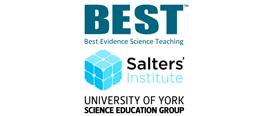- View more resources from this publisher
 Best Evidence Science Teaching
Best Evidence Science Teaching
Tooltip
These resources have been reviewed and selected by STEM Learning’s team of education specialists for factual accuracy and relevance to teaching STEM subjects in UK schools.
Electromagnetic spectrum
These diagnostic questions and response activities (contained in the zip file) support students in being able to:
- Identify types of electromagnetic radiation that can be naturally occurring.
- Describe a range of sources of harmful electromagnetic radiation.
- Describe some ways in which electromagnetic radiation can interact with matter.
- Explain why some types of electromagnetic radiation are more ionising than others.
- Apply understanding of ionising radiation to explain how radiotherapy works.
The resources include details of common misconceptions and a summary of the research upon which the resources are based.
Download the zip file for all the questions and activities.
More resources like this can be found on the BEST webpage: Best Evidence in Science Teaching
Show health and safety information
Please be aware that resources have been published on the website in the form that they were originally supplied. This means that procedures reflect general practice and standards applicable at the time resources were produced and cannot be assumed to be acceptable today. Website users are fully responsible for ensuring that any activity, including practical work, which they carry out is in accordance with current regulations related to health and safety and that an appropriate risk assessment has been carried out.
Downloads
-
Preview - electromagnetic spectrum 289.11 KB
-
Progression toolkit and teacher notes 672.03 KB
-
Powerpoint presentation 3.75 MB
-
Student activity - natural radiation 335.79 KB
-
Student activity - pulling electrons 125.08 KB
-
Student activity - radiotherapy 147.3 KB
-
Student activity - ready, steady poster 306.72 KB
-
Student activity - bad radiation 1.62 MB
-
Student activity - most ionising 62.16 KB
Show downloads
Information on the permitted use of this resource is covered by the Category Three Content section in STEM Learning’s Terms and conditions.




